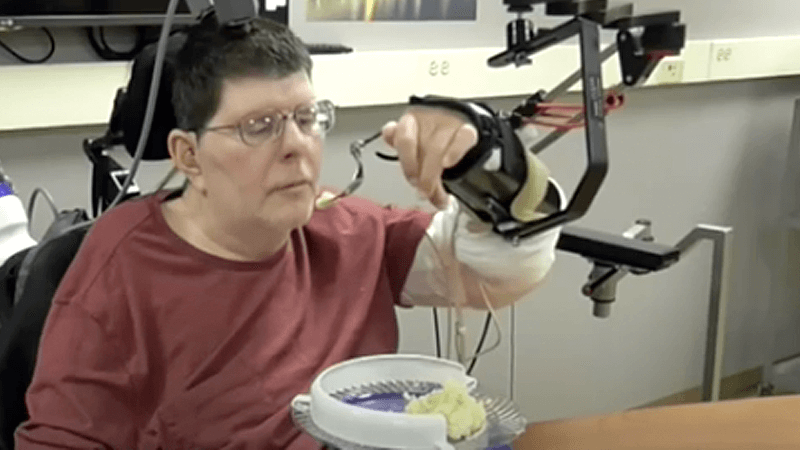Radical new technology has allowed a paralysed man to use his arm again, giving fresh hope to quadriplegics.
Bill Kochevar, who was left paralysed below the neck after a cycling accident, can now drink a cup of coffee and eat using a fork.
Ground-breaking technology translates his brainwaves into electrical pulses which are sent to electrodes in his arm. As the electrodes are triggered, they cause movement in his paralysed muscles, allowing him to grasp his hand and raise his arm.
’Awesome’
Kochevar is the first man in the world with quadriplegia to have his arm and hand movements restored using a direct link to the brain.
The 56-year-old, from Cleveland Ohio, said: “For somebody who’s been injured eight years and couldn’t move, being able to move just that little bit is awesome to me”.
“It’s better than I thought it would be. It’s pretty cool to be the first one in the world to do it.
“I’m making it move without having to really concentrate hard at it. I just think ‘out’ and it goes.”
Breakthroughs
Kochevar is one of several paralysed people who have attained a better quality of life after medical breakthroughs in recent years.
In 2015 a US man who lost the use of his legs following a spinal cord injury walked a short distance after doctors rerouted his brain signals.
And in 2014 Darek Fidyka, a 38 year-old man from Eastern Europe, learned to walk and even drive again after undergoing treatment on his spinal cord using olfactory ensheathing cells.
Happiness
In recent study, scientists carried out tests on people with locked-in syndrome which allowed them to answer simple ‘yes’ and ‘no’ questions.
To the researchers’ astonishment, many patients agreed that “as long as they received satisfactory care at home, they found their quality of life acceptable”.
Adrian Owen, a neuroscientist at the University of Western Ontario, said the research indicated that many pre-conceived notions about locked-in syndrome are false.
Quality of life
He said: “One of the most surprising outcomes of this study is that these patients reported being ‘happy’ despite being physically locked-in and incapable of expressing themselves on a day-to-day basis”.
“Indeed, previous research has shown that most locked-in patients are actually reasonably satisfied with their quality of life”.

